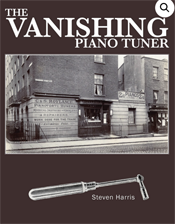Paul Chrimes. Piano technician, 10-11-2022 12:29PM
By: David Sheppard
I first met Paul Chrimes in 1980, when he was tuning the pianos at the school in Brierley Hill, where I began my classroom teaching career. 40 years on, Mr Chrimes has tuned at every school at which I have taught. He has also tuned my pianos at home, as well as those of my students, friends and colleagues. I can say that Mr Chrimes approaches every aspect of his work with care, professionalism and a sense of humour which I can only describe as 'unique'. Like many of the top technicians, Paul is partially sighted but this does not hamper his approach to his work, or his ability to carry out necessary tasks in any way whatsoever. Indeed, I recently discovered Paul lying out out underneath my piano, on his back adjusting the pedal mechanisms.
I would recommend Paul without hesitation, but watch out for his appalling jokes!


